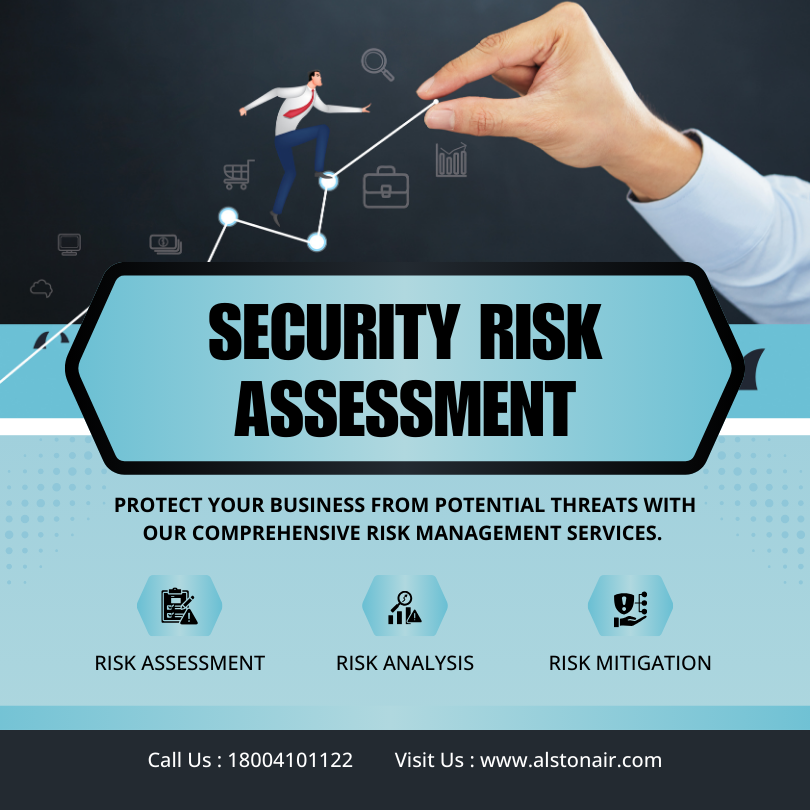
Alstonair security risk assessment is a critical process for any organization, especially for cybersecurity companies that are also involved in product development. It helps identify, evaluate, and prioritize risks related to both operational security and product security. For cybersecurity organizations, this process is particularly important because they handle sensitive information and manage products that may be used by customers to secure their own environments.
This assessment should focus on various facets, including network security, application security, development lifecycle, third-party integrations, and compliance with industry standards.
Key Components of a Security Risk Assessment
Asset Identification and Classification
Identify Critical Assets: For a cybersecurity company, assets include sensitive customer data, proprietary technologies, product code, intellectual property, and infrastructure such as servers and cloud environments.
Classify Assets: Categorize assets based on their sensitivity and importance to the organization’s operations, legal requirements, and brand reputation.
Threat Identification
External Threats: This includes hacking attempts, phishing, malware attacks, denial-of-service (DoS) attacks, and other cyber threats.
Internal Threats: This involves insider threats from employees or contractors with privileged access, as well as negligence or misuse of organizational resources.
Third-party Risks: Many product development cycles depend on third-party tools, libraries, or services, which can introduce vulnerabilities if not properly vetted.
Vulnerability Assessment
Software Vulnerabilities: Product development often involves dealing with software vulnerabilities. A vulnerability assessment should focus on identifying flaws in the product code, dependencies, and security holes.
Hardware Vulnerabilities: For companies involved in hardware product development, an assessment of hardware vulnerabilities (e.g., firmware flaws, insecure communication channels) is critical.
Environmental Vulnerabilities: These can include weaknesses in physical infrastructure, unpatched systems, and outdated technologies.
Risk Impact Assessment
Business Impact Analysis (BIA): This helps quantify the potential impact of security incidents on business operations. It takes into account factors such as downtime, reputational damage, financial loss, and legal consequences.
Legal and Regulatory Risks: For cybersecurity firms, compliance with standards such as GDPR, HIPAA, and PCI DSS is a major concern. Failure to comply with these regulations could lead to significant legal repercussions.
Risk Likelihood and Consequence Evaluation
Likelihood: Assess how likely each identified threat is to exploit vulnerabilities in the system, based on historical data, industry trends, and threat intelligence.
Consequences: Evaluate the consequences if the risk is realized. This includes potential data breaches, financial losses, intellectual property theft, and loss of customer trust.
Mitigation and Control Measures
Preventative Controls: Implement measures like encryption, firewalls, intrusion detection systems (IDS), secure coding practices, and regular security patching to prevent potential breaches.
Detective Controls: Regular audits, continuous monitoring, and anomaly detection can help detect threats in real-time.
Corrective Controls: Having incident response and disaster recovery plans in place ensures that the organization can quickly recover from any attacks.
Third-party Risk Management: Conduct thorough due diligence on third-party vendors, and ensure secure integration practices are followed.
Incident Response Plan (IRP)
Develop a Clear IRP: Ensure that the cybersecurity organization has an incident response plan that addresses both product development and organizational security issues. This plan should be tested and updated regularly.
Communication Protocols: Establish communication protocols to notify stakeholders, customers, and authorities in the event of a security breach.
Security Training and Awareness
Employee Training: Conduct ongoing cybersecurity training for employees, particularly those involved in product development. This includes secure coding practices, awareness of social engineering attacks, and proper handling of sensitive data.
Security Culture: Foster a culture of security within the organization by encouraging all employees to follow best practices and be vigilant about potential threats.
Continuous Monitoring and Testing
Penetration Testing: Regular penetration testing of both internal systems and developed products should be performed to identify exploitable weaknesses.
Red Team/Blue Team Exercises: These exercises simulate real-world attacks (Red Team) and defense mechanisms (Blue Team), helping the organization understand its security posture.
Vulnerability Scanning: Employ automated vulnerability scanning tools to identify and address potential weaknesses in code and infrastructure before they can be exploited.
Security Considerations Specific to Product Development
Secure Software Development Life Cycle (SDLC): Integrating security practices into every phase of product development is essential. This includes secure coding practices, code review, threat modeling, and testing for vulnerabilities.
Supply Chain Security: Since third-party components (libraries, APIs, tools) are often used in product development, ensuring these components are secure and free from known vulnerabilities is critical.
Product Integrity: Safeguarding product integrity ensures that no malicious code or backdoors are introduced during development, testing, or deployment phases.
Tools and Frameworks for Risk Assessment
OWASP Top 10: A widely recognized set of security best practices for identifying and addressing vulnerabilities in web applications and products.
NIST Cybersecurity Framework (CSF): A framework developed by the National Institute of Standards and Technology to guide organizations in managing and reducing cybersecurity risks.
ISO/IEC 27001: A global standard for information security management systems (ISMS) that can be used to ensure secure product development and overall organizational security.
Conclusion
For cybersecurity organizations that are also engaged in product development, a comprehensive security risk assessment is essential to protect both the company’s operations and its products. The risks associated with product development, such as vulnerabilities in the code, third-party integrations, and regulatory compliance, must be proactively identified and mitigated. Regular risk assessments, continuous monitoring, and adherence to security best practices throughout the development lifecycle can help organizations build secure, trustworthy products and maintain a strong security posture against evolving threats.
By adopting a structured and multi-layered approach to risk assessment and mitigation, cybersecurity organizations can better protect their business assets, enhance their products, and ensure the safety and privacy of their customers.